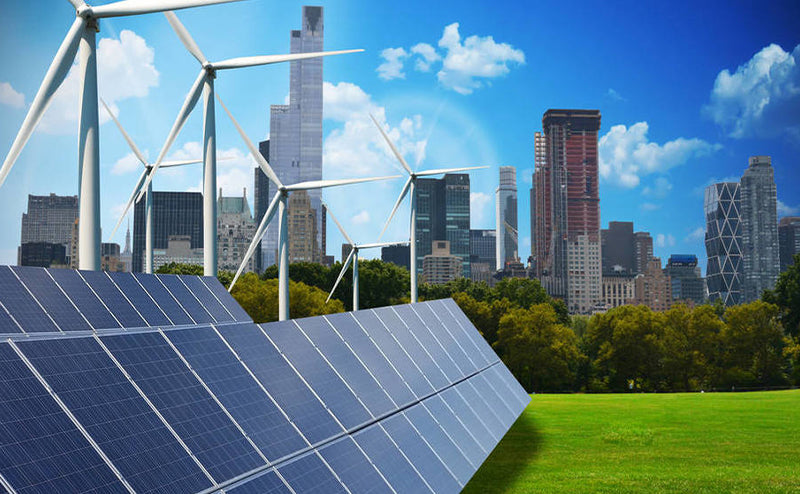
In an on-grid solar system, solar panels will continue to produce power during the day. This power can either be used instantly or exported to the grid with no backup for power outages. If at any time the system runs out of power, it draws the same from the electricity grid. Hence, a user will never run out of power in this case. Similarly, any excess that is produced by the system is fed to the grid. The advantage of an on-grid system is that the user will get a credit in his electricity bill for the extra power he sent to the grid. So, his electricity bills will also reduce. Always assess your Home's Energy Consumption, Solar Potential, Solar Electricity Needs, etc. before installing an on-grid solar system.
The light from the sun falls on the solar panels from where electricity is generated. This DC from the sun is converted into AC with the help of the inverter, which is then used by consumers in their homes or any commercial establishment. Till this stage operations of any solar system is the same. The main difference is beyond this point. After the electricity that is consumed by us, there can be two routes for the extra energy generated:
1. It can be either stored in batteries for use at a later part of the day (off-grid solar system) .
2. Fed to the grid (on-grid solar system). Based on the feed-in-tariff rates (tariff fixed by the government, for purchase of the solar power generated from solar plants) in your area, your electricity bill is reduced for the amount of power that you have sold to the power grid.
Benefits
1. Guaranteed 24*7 power supply - With an option to use either solar power or the main power grid, the consumer will always have access to power and will never suffer from a power outage.
2. Opportunity to earn more - With the help of a net meter installed at your home, you can track the number of units you sent to the power grid and claim a credit for that in your home electricity bill. This forms a lucrative option for the consumers who think of it as an extra opportunity to make money. Almost all the states in the USA and even India have mandated Net Metering.
3. More Savings - The main purpose of installing an on-grid solar system is to reduce your electricity bills. You can adjust the usage depending upon peak demand hours and hence end up paying no peak demand charges. These are the higher rate of charge that the utility charges for using the grid during high-demand hours. Also, you end up paying less on electricity bills and earn more through Net Metering.
4. Good Investment Returns - An on-grid solar system offers a good investment option. It has 5 years as payback time and provides free electricity for the next two decades. You can convert your own property into a revenue-generating avenue by investing in solar and achieving ROI in just 4-5 years.
5. Works efficiently - The on-grid system works in sync with the grid. There is no limitation in the grid-tied system, you can run any home appliance on the grid-tied solar system. Also, it utilizes 100% of solar power produced from solar panels. For example, a 1 kW on-grid system can run 5 kW power.
6. Easy to install - Installation of an on-grid system is easy and can be done easily by oneself on the rooftop. It can be easily installed on residential rooftops, rooftops of commercial complexes, housing societies, community centres, government organizations, private institutions, etc.
7. Less Costly - Since an on-grid solar system does not require batteries, it is cheaper to install when compared to an off-grid system. It is less costly when compared to other solar systems.
8. Less Maintenance - An on-grid solar system involves less maintenance and generally has a longer life when compared to an off-grid system.
9. Subsidies and Other Incentives - A user can avail of government subsidies and other incentives to install on-grid solar systems.
Article from: Wuzeck
For more information, please click here: https://wuzeck.com/